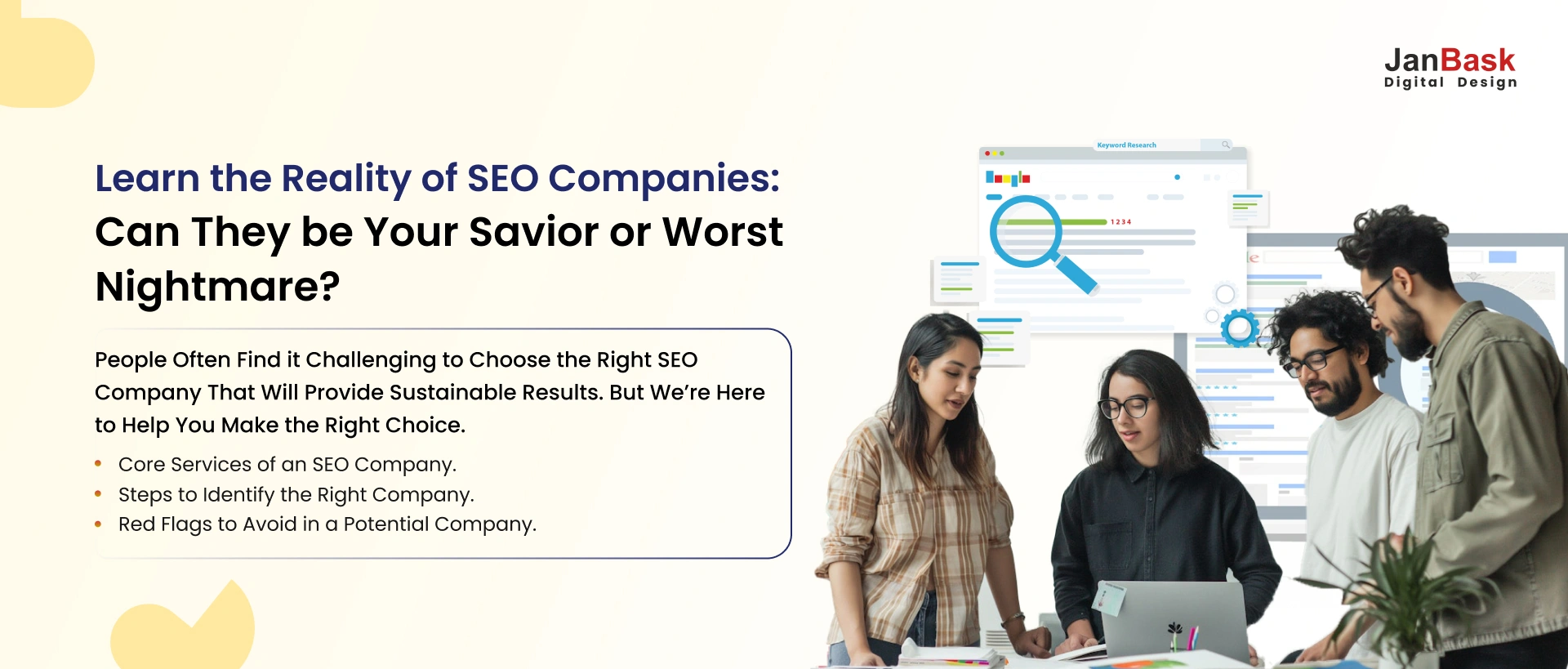
Have you ever searched for something on the internet using Google? Perhaps it was the ‘best tacos in town’ or ‘how to get rid of a coffee stain,’ which we all know at some point we have tried.
Have you ever wondered why some websites are always in the limelight while others are mere shadows in cyberspace?
It’s not a matter of chance or some covert relationship with Google. Nope, it's all thanks to three little letters: SEO, also known as Search Engine Optimization.
Hang around, and let us tell you how to go from having no website presence in the search rankings to being a star player. We promise it’s not as complicated as it seems, and here is why.
By the end of this blog, you will have a solid understanding of:
To understand SEO basics in its entirety, we first need to understand its elemental concept.
SEO is an acronym for Search Engine Optimization, which increases a website's visibility in organic (unpaid) search engine results. According to the SEO overview, it enhances your website's overall authority and experience according to your target audience’s liking.
Here's an analogy: If the internet is an extensive library, then SEO is either making sure your book stands out or classifying it under a particular section where people will search for it. Simply put, the probability of finding potential customers also increases as SEO improves.
But there's more! Typically, SEO is viewed narrowly, which means making changes to the website to benefit the search engines alone. However, SEO is also about improving the visitor’s experience on your site. When people visit your site, most can bounce right back without getting what they want.
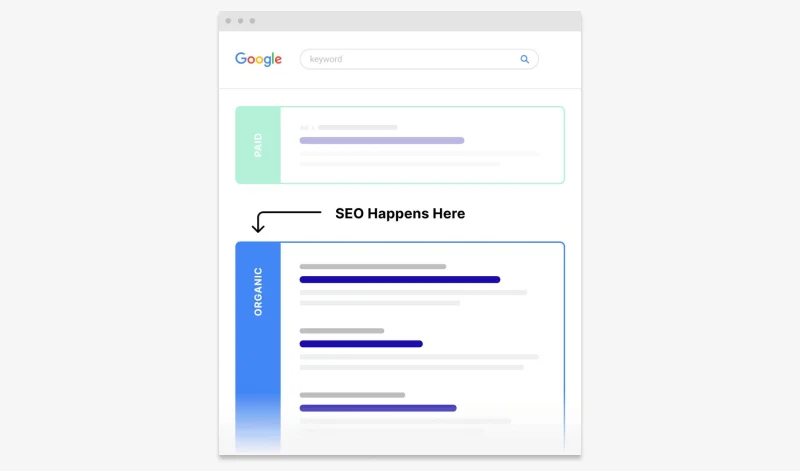
So, you may ask, “SEO marketing – is that the same as SEO?” Yes and no, because SEO marketing means using SEO in the context of your marketing strategy.
In other words, SEO marketing is much more than implementing SEO strategies into your online marketing strategy. It may involve writing friendly content for the search engine, improving the site structure, link building, and many other things to increase your online presence and gain more potential customers.

Search engine optimization (SEO) is indispensable to any effective and efficient digital marketing toolkit.
It works in conjunction with other internet marketing platforms, such as social media and content marketing, to form a complete solitary marketing campaign.
By giving SEO priorities, you will be sure that target visitors will easily find your site, increasing traffic and resulting in high conversion rates.
Before diving deeper into SEO basics, there is important information concerning search engines’ operation. Search engines employ crawling, indexing, and ranking of web pages by systematically using some factors.
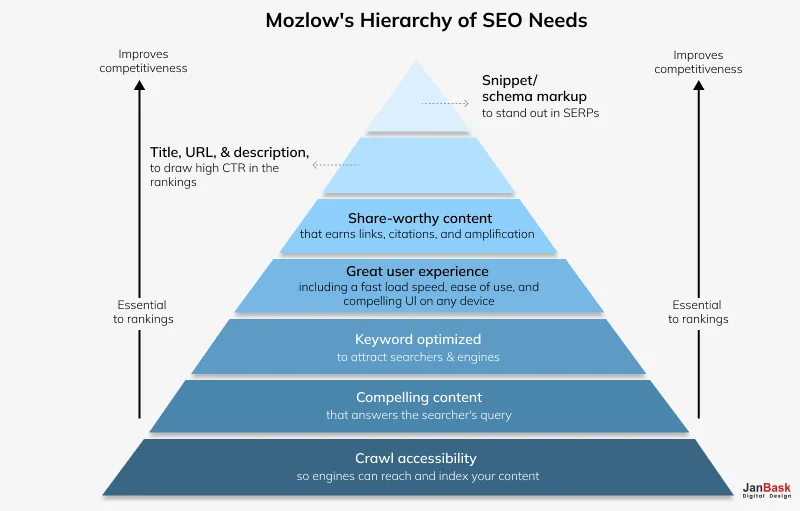
Web search tools, for example, Google employs computer programs acknowledged as ‘spiders’ or ‘crawlers’ that act in an organized way to find websites and index them. These programs move from link to link, read the page's contents, and collect all the information into a single document known as an index.
Every time a user enters a search phrase, search engine algorithms look through the index for the relevant information concerning a user’s search goal. The order in which the results are displayed on SERP depends on various factors such as:
The performance metric assesses the appropriateness of the material posted within the pages and the keyword within the search query. It seeks to gain complete page views that, in all respects, contain information on what the user is interested in. It is the process of identifying what the page is about based on the title, headlines, the main body of text, and the meta tags.
Another factor that determines the position of websites is their authority and trust. Including factors like site credibility, content developers’ qualifications, and the usefulness of the information posted. Thus, making your website trustworthy and authoritative will help it rank higher, increasing its popularity and reliability.
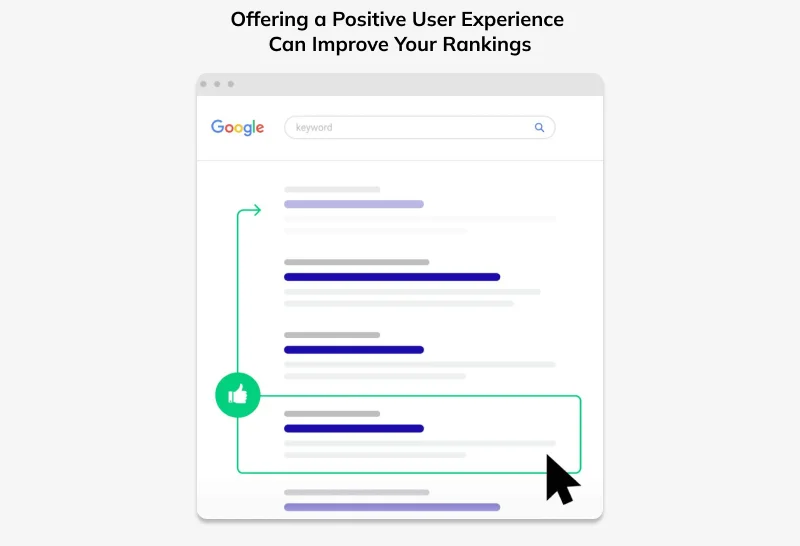
Google and other search engines favor websites that offer a positive user experience. Thus, they prefer sites that are easy to navigate, have well-structured and readable content, and have good design. When you pay attention to these elements, you are not only being kind to your users but also increasing your site’s rank in search engines, which helps to bring more traffic and engagement.
Search engines do not only index what your website has to offer, but they also analyze your website’s technical success. They prefer fast sites, function well on handheld devices, and utilize secure connection protocols like https. On the other hand, negative factors such as broken links and poor code standards tend to lower the rankings.

With the increase in the trend of digital marketing, lots and lots of business websites are emerging. But how will you know which site holds the most relevant information per search intent among so many websites? Here comes the role of the SEO-Search Engine Optimization algorithm.
Search engine algorithms are dynamic and continue changing to ensure that users get the best and highest-quality results. Google’s set of ranking parameters is known as PageRank—it’s one of the most popular and effective ones. It involves analyzing factors such as the number, quality, frequency, and relevance of backlinks linking to the website to ascertain its general value and importance.
Get Started with SEO – Boost Your Website Visibility Now!

For business owners, SEO can be a great advantage in many ways, maximizing their online presence and company growth.
Search rankings have the potential to give your brand and site more exposure among users.
It assists in achieving targeted traffic since users who access your site are those looking for products or services offered by your business.
As organic search traffic is not paid, SEO can be considered less expensive than conventional advertisement in general.
In the subsequent sections of this SEO guide for beginners, we will discuss how well SEO strategies can deliver organic, long-term results for your website’s performance.
Effective SEO involves optimizing various aspects of your website, which can be broadly categorized into three main components.
On-page SEO is one of the core concepts of SEO that aims to improve your website's ranking and its web pages in SERP. It is like doing some facelift on your web page so that the page is optimized for the search engines and the users. Here, we look at the on-page SEO factors in detail and provide a brief insight into why these are important to human beings.
Title Tags are your page's title and are the most critical part of SEO since the search engine will read it first. They appear in the browser tab's title and as the hyperlink in SERP. Target keywords should be placed appropriately in the title tag, and the title tag should be written in a way that is appealing to the target audience.
Picture it as the first impression you make to your potential visitors. If you make the impression strong enough, guess what?—they will click!
Meta Descriptions, on the other hand, distill what the given page is all about in the form of a description. Nonetheless, an engaging and compelling meta-description does not directly relate to ranking but can significantly impact click-through rates.
This is where you promote your content in the blink of an eye! Suppose you used a search engine—would you open an article featuring a rather dull title or one that guarantees to offer you great content? The choice is clear!
Headers are like guidelines for your content. They provide outlines for your text and help readers navigate your web page.
Unlike the title tag, the H1 tag is usually used for the page's title, and the primary keyword must be placed here.
Subheadings (H2, H3) divide the content into pieces so that users (and search engines) can understand its structure.
More than just improving text layout, headers work alongside semantic meanings to inform search engines about this and that section.
Imagine trying to find something in a book—if the book is well structured with clear chapter divisions and headings, the reader will not easily get lost.
On-page optimization involves producing content that is of high quality and relevant to users’ needs.
Your content should serve the needs and interests of the target audience while blending in the target keywords.
This means producing content that is creative and natural rather than trying to force the keywords into every fold of the article.
Write as if you’re talking to a friend about something who is near and dear to you; that would be great.
Information, knowledge, and quality replies to the questions will help readers stay on your page longer. This lowers bounce rates, which informs search engines that your content is valuable; thus, it makes it to the list.
Images are very essential in the improvement of user experience and interaction.
Nevertheless, they need to be fine-tuned just a little to increase their page ranking on the search engine. Image optimization includes using appropriate file names, image descriptions, and captions.
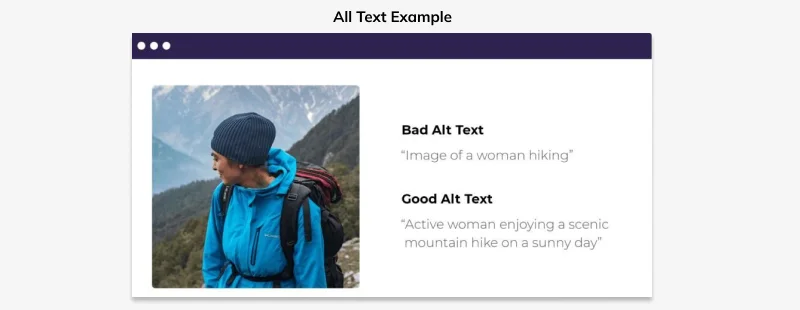
Alt tags explain what the image is about, helping the search engine understand it. This is especially important for users with visual disabilities who use screen readers.
Optimizing images allows not only to make the content more accessible but also to increase the possibility of appearing in image search results.
This aspect of SEO relates to tasks that are carried out away from your website, yet they greatly influence its SEO status.
Off-page SEO is the process of marketing your website to other websites and entities to improve its reputation and credibility.
Link building is the most vital part of off-page SEO. It means obtaining relevant backlinks on highly authoritative websites related to your specific topic. Let’s explore this further.
Link building, also known as back linking, is the act of getting other websites to link to your website. Google and other search engines interpret these links as votes and turn them into expressions that suggest your content is worthy of their viewers’ attention.
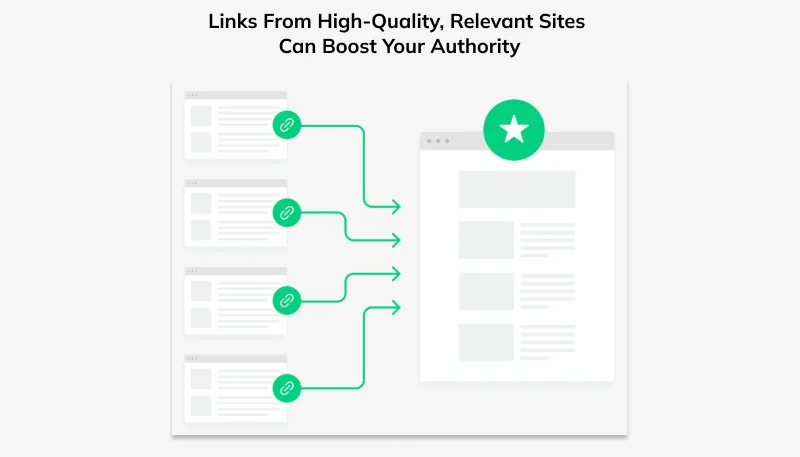
The more quality backlinks that point to your site, the better your chances of fixing your rank in the desired search results.
Thus, when you receive backlinks from other well-recognized sites, it’s an indication to the search engines that this site is also credible. This is particularly important because search engines rank content that is derived from reputable sources highly.
Think of it this way: when a highly reputed author in your area directs users to your site, it helps build credibility for users and in the eyes of search engines.
The other way of link building is through guest posting. This includes creating articles for other good-quality blog posts or any other website that is interested in exchanging a link with your website. Guest posting serves multiple purposes:
In this way, you get to an entirely different group of people who probably haven’t even had the chance to hear about you and your brand.
By creating good material on an authoritative site, you reach the audience and establish yourself as an expert within your area of specialization. This procedure also has positive effects on the SEO plan while Increasing the recognition of a particular person or company.
The other advantage of guest blogging is the high traffic generated to the website once the blogger is on a site that attracts many visitors.
It might be useful to continue communicating with other bloggers and website owners, which can contribute to establishing business cooperation in the future.
Guest posting is highly effective for marketing your business, but volume is not what needs to be focused on here. When selecting targets to focus on within your topic, focus on targets that reach interested audiences and have high DA. Thus, the links you receive will be much more significant and should help improve your SEO.
Another excellent example of practicing good Off-page SEO is to practice broken link building. In this strategy, you must find broken links to websites that serve the same set of services or products as in your niche.
Broken or dead links refer to links that have become non-existent. You can then seek permission from the website owner or the person in charge and request that they replace the busted link with the one you have given to your site with content related to their website's niche.
Here’s how you can turn broken links into valuable backlinks:
You can use various tools to identify the broken links on a website. The popular choices are ‘Ahrefs’ and ‘Check My Links.’
Always ensure you have better quality content that can replace the broken links you provide.
Contact the site's owner or editor and inform them that your link is broken and can be substituted with your content.
This method also benefits the website that is receiving their dead links fixed. In the process, you benefit your own site by earning backlinks, which helps your SEO. It’s a win-win!
SEO is not limited to enhancing the website structure or creating backlinks; it also analyzes the website's technical aspects. Technical SEO is all about optimizing your site's core fundamentals to improve crawlability and indexation by crawlers. This is important because crawlers or users may need more clarity even if the content is created with the best available expertise.
Let’s delve into the critical components of technical SEO:
The speed of loading the website is crucial for the users as well as for the ranking of the search engine. A site that takes time to load will repel visitors, and they will leave the site without even exploring the content of the site, which is not good for ranking. Here are some strategies to optimize site speed as in our Search Engine Optimization basics:
Using high-resolution images on your site may take too long to load. There are ways to minimize the file size of the images while still maintaining their quality. Formats like WebP can also reduce the file size.
This allows browsers to store some elements of your site so that when the user revisits the site, the browser does not have to request all its components. You can set the time that cached files should expire, which helps load the page faster for returning visitors.
Each redirect leads to a new HTTP request/response cycle, which impacts the time it takes to make your website available to the end user. Limit redirects; if they have to be used, they should lead to the correct location.
JavaScript and CSS files that slow down the page should be compressed. This means using asynchronous loading or deferring loading of non-essential scripts.
As the internet is shifting to mobile devices such as smartphones and tablets, it’s imperative to have a mobile-friendly website. Mobile-friendly is the most important ranking factor according to Google, and Google has a mobile-first indexing policy that ranks the site based on the mobile version of the site. Here’s how to optimize for mobile:
It is imperative to note that your website’s layout should change depending on the device it is being used. This makes it possible to develop a derivation between a Tablet, a PC interface, and a Smartphone.
Ensure that buttons and links are large and not too close together so that a new end user does not make a mistake.
Mobile users are impatient and always busy, so they want information on an as-needed basis. Minimize the use of large pictures and long pages of scripts, as these two are a bit slow on the mobile version.
An XML sitemap is a file that describes all the pages of a website so that search engines can crawl the site’s structure and new pages more effectively. Find out below why XML sitemap is important, as in finding out about what is SEO marketing for business owners:
XML sitemaps give search engines a map of your site’s URLs. This way, search engines can crawl your site better, and all the indexed.
Sitemaps may also contain other data regarding each URL, like the last time modification date (<lastmod>) and the frequency of changes implied (<changefreq>). Besides this, it also calculates the page’s relevance level as compared to other pages on the website (<priority>). This information assists the search engines in deciding on which pages to crawl first or even at all, depending on their relevance.
However, after developing an XML sitemap, you can upload it using tools like Google Search Console. This informs search engines about your site's structure, including any changes you have made to it.
Many online tools make it easy to create an XML sitemap. These tools allow you to create a sitemap without knowing much about code and p programming—all you need to do is enter your website URL.
Any newcomer to SEO must ensure that he/she practices the basic rules of Internet marketing before practicing SEO.
Starting the SEO process may be really difficult, but once you have the right tools, you are good to go. Here are some must-have tools that can help you on your SEO journey:
Google’s free service helps website and blog owners learn how their sites are faring in search engine rankings. It enables you to solve technical problems such as 404 errors, submit sitemaps, and even determine the number of clicks made by keywords.
Why It’s Valuable:
Through Google Search Console, your site will be checked to see whether it is properly indexed and its health status analyzed. This will help prevent possible problems that could impact its ranking.
It is also important to note that Google Analytics is a robust tool that provides insight into users’ behavior on your site. It has more specific features for analyzing the traffic source, its users, and their subsequent behavior on the site.
Why It’s Valuable:
By using Google Analytics, it is possible to track the effectiveness of SEO, analyze its outcomes, and determine the prospects for expression. This is crucial to making correct decisions, especially in today’s world where data is vital.
Free Options:
Google Keyword Planner is one of the best tools for identifying keywords. It helps one begin the process by telling about the search volumes and competition level of any particular keyword so that you can better select keywords for your content.
Paid Tools:
While Ahrefs and SEMrush come with a set of basic options – keyword difficulty scores are optional, the same applies to competitor analysis and keyword suggestions. Above all, these tools can help you gain more insight into the keyword.
Why They’re Valuable:
Almost every step in SEO is predicated on properly performing keyword research. It uses tools that indicate what your audience is looking for and how to market to such queries successfully.
Plugins:
Both Yoast SEO and All in One SEO Pack are WordPress plugins that offer suggestions for better SEO. Such a tool provides suggestions on your meta tags, headings, and other elements such as readability, etc.
Why They’re Valuable:
These plugins help enrich the presented content with the best SEO features. They can suggest changes that should facilitate the site’s structure and make your content more semantically friendly.
While practicing SEO basics for your website, you should always remember that SEO is a long-term process and expecting results in a short time is a big ‘NO’. Conduct extensive research on what basics of SEO your competitors are implementing and try to include them in yours.
Keywords are the most fundamental components of your SEO plan. Whenever a user types in for a search, they use particular words or combination of words to complete their search. SEO is all about targeting those search words and phrases in your content. And there are many ways to find those precious keywords, as discussed below-
What better approach to this than having a friendly gathering with the tea and outlining the keywords your target audience is likely to search for? This will help you better understand your audience and better serve them.
Several digital tools are accessible on the market that will help you more accurately identify the words or phrases your competitors are ranking for. Some of the most popular and reliable ones are as mentioned below:
These resources provide you with the ability to find new keywords to place emphasis on and offer information like search volume and the competition they concentrate on.
The words you incorporate into your SEO strategy should have a large amount of search activity and compete minimally.
A presence online within the local digital market is essential if you are in a company that depends on a physical setup or serves a limited area. In this type of marketing, local SEO helps by attracting local clients and raising your presence in local search results.
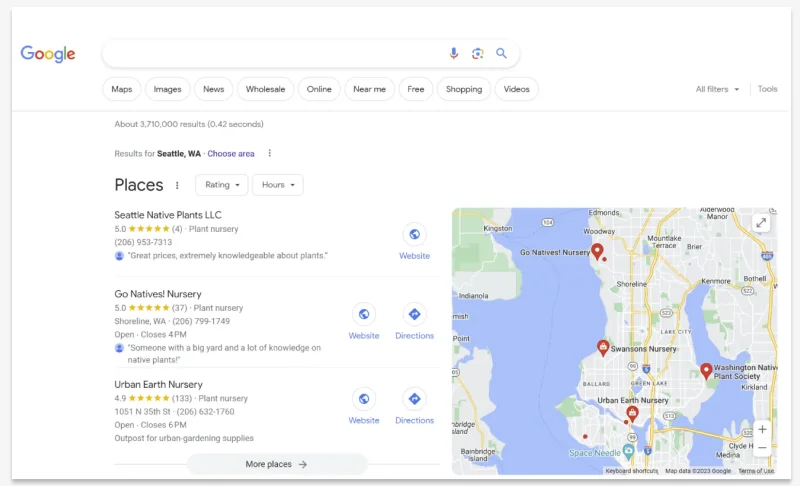
Local SEO benefits firms that want to reach users in their neighborhoods. It is particularly helpful because an increasing number of individuals are using their smartphones to discover products or destinations nearby. Some basic terminologies are as follows:
Optimize and verify your Google My Business profile to control your business details in Google Search and Maps.
It has been established that having the company’s NAP information accurately listed on many websites and directories increases your local search positioning.
Asking clients to post comments on sites like Google, Facebook, and Yelp can enhance your visibility in the local search and your overall standing.
Search and browsing dependencies on mobile devices are driving SEO to focus more heavily on mobile optimization. In 2019, Google clarified that website content designed for mobile users would receive favored placement during searches and in preserving webpages.
Whenever you plan to optimize your website for enhanced mobile usage, you should consider these factors:
To increase a website's mobile performance, you need to use compressed images, limit the number of redirects, and take advantage of browser caching.
You should optimize your website to load and work smoothly on any mobile device without disrupting any screen size.
Always create straightforward content to reach and study on smaller devices, including clear and direct action reminders and limiting unnecessary distractions for users.
In this step, you aim to resolve problems such as poor redirects, inaccessible content, and disruptive ads that negatively impact your mobile user experience.
Simply because social media platforms do not immediately impact search engine rankings does not mean they cannot bolster SEO and raise visibility across platforms. This is how it enhances your website presence:
When people see you, they know you. This is the principle of social media marketing. Participating in social media extends your brand reach and helps polish your reputation among the audience.
Publishing your content on social media has the potential to raise the level of referral to your website.
Interacting with your audience on social media improves your engagement stats, including the time individuals spend on the site, and reduces bounce rates. This, in turn, leads to better search rankings.
Distributing your content via social media can enhance your audience and improve your brand recognition.
More than understanding the basics of SEO, it is crucial to identify the common mistakes you should avoid while performing SEO for your business. After all, you don’t need to make every mistake yourself to learn; you can learn from the mistakes others have made. We listed some of the most common mistakes for you to avoid-
This method consists of distributing identical or very similar content on several pages of your website or across multiple websites. Making an original version of something is not enough; search engines still need to determine which option is the original, which can weaken your rankings. It also triggers user confusion and might lead to a bad user experience.
Failure to ensure that your preferred website takes a short time to load will result in customers getting annoyed and thus leaving your site. One reason is that it often ranks customer-facing sites based on how quickly they load and if your site is too slow, it can start to affect your ranking detrimentally.
Lack of mobile usability decreases the site’s ranking and causes users discomfort with navigation and working with the site. With internet users accessing the internet from their mobile phones increasing, a poorly designed site that ranks badly is usually a sign of poor UX. In the modern world, it has been established that search engines have a conception of user-friendly sites on mobile devices.
Google has clearly stated that it doesn’t accept web links created through spam, link schemes, link farms, or private blog networks. It is better to concentrate on attaining targeted, high-quality links naturally. Search engines can identify these techniques, but they may cause your site to be penalized, which means a lower ranking. Thus, it is better to link just to focus on quality natural backlinks.
Reviewing key performance indicators and investigating your website’s search engine performance is an essential step in assessing your SEO success.
First, take note of organic traffic, which represents the number of visitors who find your website from search outcomes that are not bought (organic). Watch your keyword rankings to determine how effectively your site serves its intended targeted keywords.
Your click-through rate (CTR) is of major importance; a higher CTR represents that your site title tags and meta descriptions are attractive and appropriate for your specific content.
If you aim to do well, examine the bounce rate closely because it can point out potential problems with your content that might reduce your audience's engagement.
The conversion rate is the number of website visitors who complete desired activities, like purchasing or subscribing to a newsletter.
To grow your knowledge, scrutinize website traffic and user interaction behavior through Google Analytics and Google Search Console, looking for any constraints.
SEO users heavily depend on Ahrefs, SEMrush, and Moz, which help them track changes in their keyword rankings and detect link modifications.
Before making alterations, create a repository of base metrics and deliver scheduled reports for assessment. Then, analyze the data to find recurrent trends and modify your strategies based on these results.
Moving to this method will upgrade your website’s visibility and user experience, which will then help you gain a heightened ranking on search engines.
Are you just starting out in business and want to enhance your SEO? Partnering with a top digital marketing agency like JanBask Digital Design may really improve the situation.
Professional assistance is generally precious, even if tackling SEO solely in-house is possible.
When your current initiatives are not producing the desired improvements in traffic and rankings, JanBask can provide the deep knowledge and rich experience to help turn the situation around.
We create enhanced SEO strategies specific to your business requirements and goals, ensuring excellent efficiency alongside your other responsibilities.
We also handle complex technical SEO issues and track digital media's dynamic nature, which can be taxing if one has to manage it alone.
Our calculative tools and other industry best practices will help you save time on other significant mundane business activities.
JanBask ensures superior, sustainable performance tied to ethical values and encourages dialogue, making us a loyal partner in advancing your SEO and driving growth.
Trust JanBask to simplify the intricate world of SEO and to help raise your business to new levels!
SEO improves website visibility on search engines. By optimizing keyword usage and creating engaging content, your website can achieve higher rankings or draw larger audiences.
By applying SEO methods, you can enhance your website and welcome greater traffic. The plan should include increasing your site's efficiency and optimizing its speed, along with mobile-friendliness. You need to increase your site's ranking in search engines to increase traffic and encourage new prospects.
To succeed with SEO strategies, you must understand keywords, craft exceptional content, and refine on-page SEO, including headers and meta descriptions. Securing off-site SEO turns on link acquisition. In addition, helpful content makes it easier for search engines to find and catalog your website.
Start by conducting keyword research to find out what your audience desires when optimizing SEO for your website. Create works that fulfill the demands linked to those keywords. Amplify your on-page characteristics with titles and header tags. Assemble reliable backlinks to verify your website fulfills expectations and optimize page loading for mobile devices.
Our guide includes essential topics and details for SEO beginners. It usually features parts dealing with keyword study and content optimization, along with technical optimization and off-site SEO. These guides allow beginners to clearly learn and put into practice effective SEO techniques.
SEO has become indispensable for every new startup vendor and business owner who wants to grow their business online. On the other hand, the digital marketing mix requires coordination of factors such as keywords, web page optimization, extra promotion measures, changes, and regional SEO approaches.
Engaging with your journey of learning about SEO basics—it is a continuous process that, over time, can yield significant benefits. When you implement SEO tactics yourself or plan to hire specialists later, you should understand that search engine optimization is always moving forward.
If you want to increase the chances of your success in the internet world and are interested in hiring an experienced specialist, please feel free to contact us. At our SEO optimization agency, Janbask, we customize SEO solutions for every business, including the one you operate. Join us today, and let us help you get the best out of your digital marketing goals!
Interested in our Seo Services?

Leave a Reply